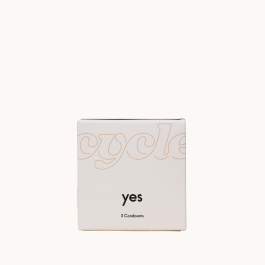Gonorrhea: symptoms & treatment
What is gonorrhea?
Gonorrhea is a sexually transmitted infection that occurs more often in recent times, as a result of the reduced use of condoms. Gonorrhea is very contagious. Gonorrhea is caused by the Neisseria gonorrhoeae bacteria and nestles itself into the mucous membranes of the anus, penis, and vagina. Gonorrhea can also be present in the throat or eyes.
Gonorrhea usually develops because of unsafe sex. In most cases, you’ll contract the bacteria through contact between the penis and anus or vagina and penis. But it can also happen via the hands, a sex toy, oral sex, and in some cases through kissing.
Since halfway into 2022, the number of people with gonorrhea has been rising. Particularly in young people below 25, and more specifically in hetero women. In 2022, 10.600 people who were tested for an STD by the Dutch Municipal Health Service (Gemeentelijke Gezondheidsdienst, GGD) had gonorrhea. Dutch GPs diagnosed gonorrhea around 12.700 times in this same year. In the UK, the number of people with a gonorrhea diagnosis was 82.592, an increase of 50,3% when compared to 2021. The rise in the number of infections could be a result of the fact that fewer young people use condoms during sex. The use of a condom significantly reduces the risk of infection!
Gonorrhea symptoms (man vs. woman)
Certainly, not everyone with gonorrhea has symptoms of it. About 90% of men (and people with a penis) with gonorrhea will get symptoms. This does concern an infection of the penis. If the gonorrhea is in the anus or throat, most people won’t notice it. Only in 10% of all infections your body makes you aware of the infection.
The symptoms of gonorrhea in men (and people who have a penis):
Pain or a burning sensation when peeing
Discharge that looks like pus from the penis
Itchiness around the anus
Very incidentally an eye infection, joint pain, or throat aches
When women+ aren’t treated for gonorrhea in time, severe symptoms can develop, such as:
Pelvic inflammation (pain in the lower belly, often alongside fever, changing discharge, and irregular menstruation)
Decreased fertility
Ectopic pregnancy
Gonorrhea in the throat
Yep, that can happen. Gonorrhea can also be found in the throat. In gonorrhea in the throat, there are often no symptoms, so you won’t know if you have it! You could’ve contracted gonorrhea through oral sex with someone who has gonorrhea, or at the very least by kissing someone who has it in their throat. That’s why it is important to also use a condom during oral sex!
Treatment of gonorrhea
Gonorrhea is treated with antibiotics. This can be done with a pill treatment or an injection (in the butt). In most cases, you’ll get ceftriaxone (the injection), ciprofloxacin, or amoxicillin (pills). Antibiotics can cause side effects such as nausea.
These medicines are prescribed by a doctor. If you have a (regular) sex partner, they will also have to be treated. Always wait to have sex until 1 week after the injection or first pill.
Gonorrhea and pregnancy
If you’re pregnant and you get gonorrhea, there can be certain complications during the pregnancy. Think of infections in the uterus or a premature birth. During the birth, your baby can also be infected, which can lead to eye infections and a loss of vision for your baby. That’s why it is very important that, when there’s a chance of an infection, you get tested and treated if necessary.
Preventing gonorrhea
That’s very simple: Using a condom significantly reduces the risk of contracting gonorrhea. It might seem easy to just ‘pop a pill’, but do be aware that bacteria can become resistant to antibiotics, which means that they won’t work as well. Antibiotics also often cause side effects that will make you feel less than great! In short, prevention is much better than treatment.
Have you been infected with gonorrhea? Don’t forget to inform your sex partner(s). Embarrassing? It might feel that way, but it’s much worse to keep quiet about it. Are you too afraid to speak up? In the Netherlands, you can use partnerwaarschuwing.nl to help you. When you use this website, your sex partner(s) will be sent a message about the STD. This can also be done anonymously. If you do not live in the Netherlands, check to see whether a similar service is offered in your region.
For more information on STDs, take a look here:





























